I had the opportunity to lead a session on Penjing on Sunday.
I started by talking about the meaning and understanding; there being 3 distinct categories, “ Shuma “ or tree penjing,”Shanshui” or landscape penjing and “shuihan”, being water and land. How the early penjing artists gained influence and understanding from their own painters and poets of the time to create landscape images to evoke associations and convey personal feelings.
Dating back to 200BC/200AD, but becoming an advanced art form by the Song Dynasty of the tenth century, after which the art was spread to Japan and they began to practice Bonsai as it has become today.
The tools, techniques, and training are all very similar, and Penjing can put more emphasis on the rock and water and simply use the trees as a compliment.
The broad scope of Penjing landscape in Bonsai as we know and understand it, using smaller trees and rocks can provide us with a wonderful range of ideas.
I have been recently looking at the difficulty of sourcing rock and oval trays, so felt it appropriate to try to use locally found materials.
The demonstration then took place using flat slab paving Schist and Schist pieces, glued fish hook rings for wire ties, good potting mix but with mixed Peat and Clay to cover that mix and to use as a medium for natural moss. All with 3 “ Blue Rug “ junipers planted at different heights.
Now planted, the trees need to settle and be fed before some pruning and wiring be carried out for refinement.


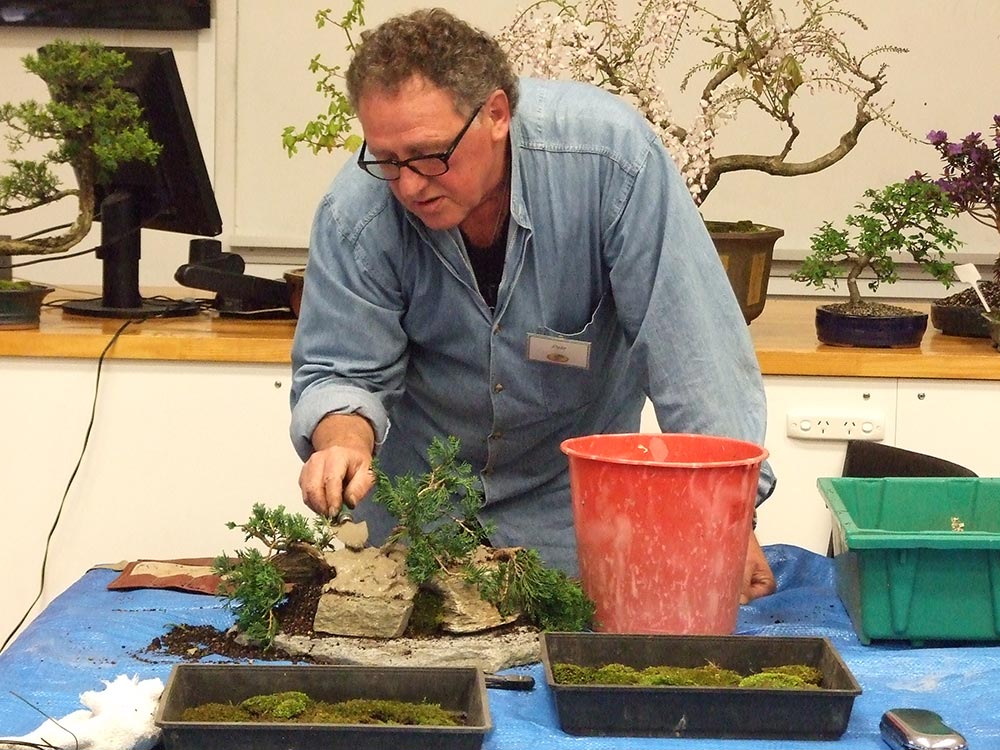

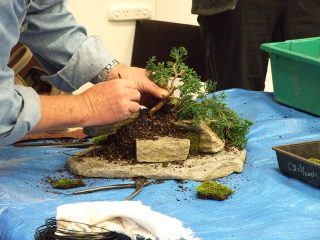
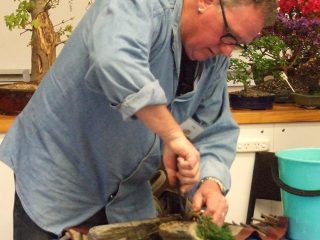
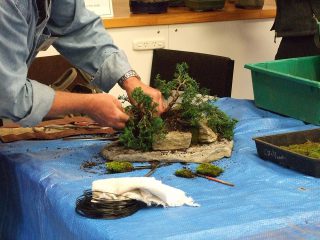
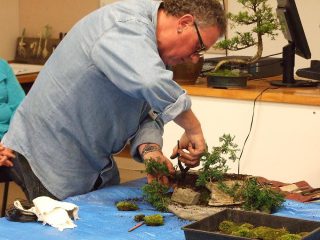

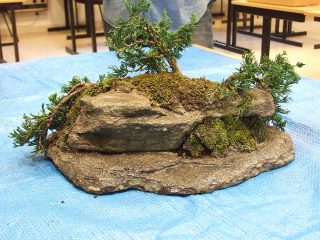
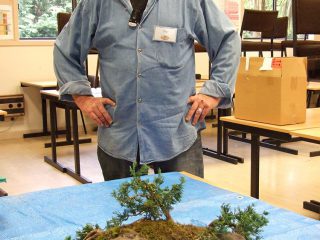
Leave A Comment